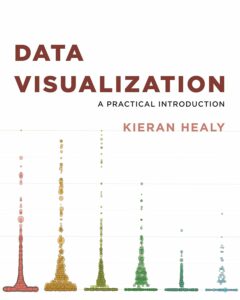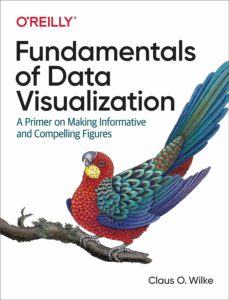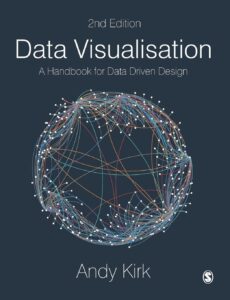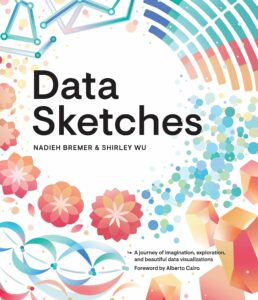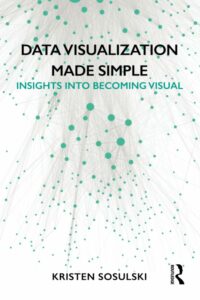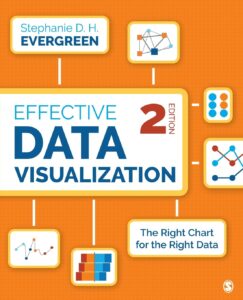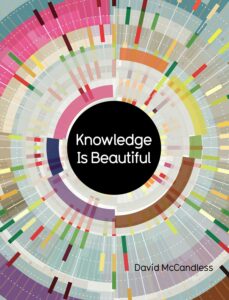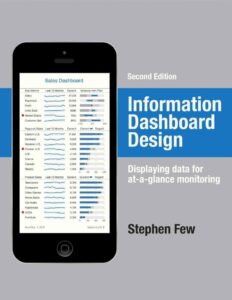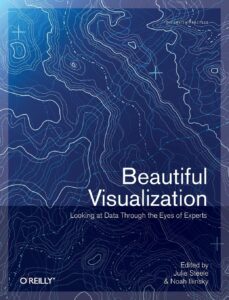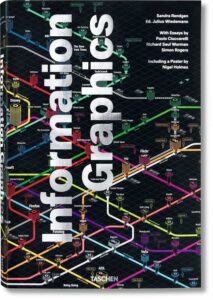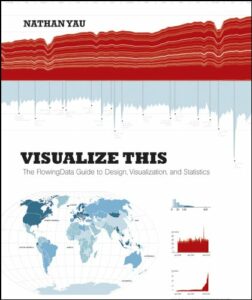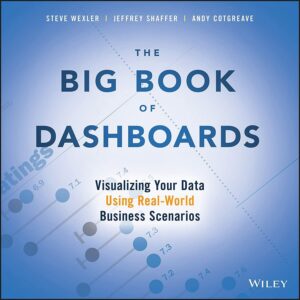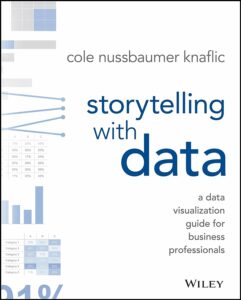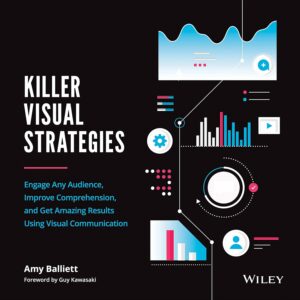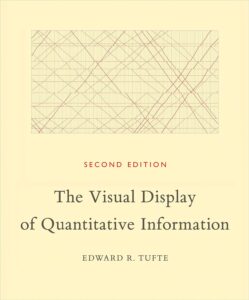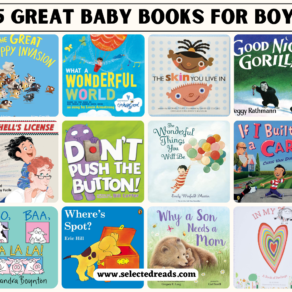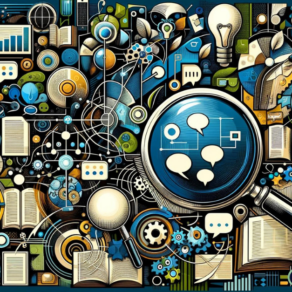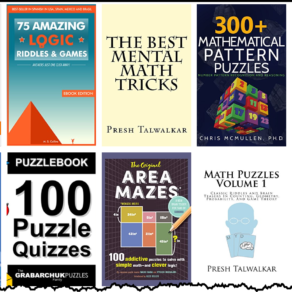Data visualization books are the topic of our blog post today!
In an era where data is becoming the new oil, understanding how to translate those numbers into something meaningful is a game-changer, especially in the realm of education. I’ve been dabbling in data visualization for a good while now, both as a teacher and an educational researcher. It’s astounding how a well-designed chart can instantly light up a room or a cleverly crafted infographic can make a complex idea suddenly click.
Today, I’m excited to share with you a curated list of books that delve into this fascinating subject. Whether you’re a teacher looking to make your lessons more engaging or a researcher like me, wanting to present your findings in a compelling way, these books are your golden ticket.
If you’re looking for an even more extensive list, make sure to head over to our research methodology section. There, I’ve put together a range of resources, including more quantitative research books, qualitative research books, mixed methods research books, and more.
Data Visualization Books
Here are our top picks for research visualization books:
1. Data Visualization: A Practical Introduction, by Kieran Healy
If you’re new to the field of data visualization, R, Kieran Healy’s book offers a comprehensive, hands-on guide. Not only does it discuss the theoretical aspects of what makes a graph effective, but it also dives into the technical nitty-gritty, using ggplot2, a popular R package for data visualization.
The book covers everything from basic plots to complex graphics, walking you through layering, grouping, and summarizing data to create comprehensive visuals. It’s an all-in-one primer that even incorporates the “tidyverse” approach to data analysis, simplifying your R experience.
Get the book on Amazon or Bookshop
2. Fundamentals of Data Visualization, by Claus Wilke
Navigating the labyrinth of data visualization options can be overwhelming, and that’s where Claus Wilke’s book comes into play. Beyond providing how-to solutions for common visualization problems, this book focuses on the principles behind crafting compelling figures.
It delves into key elements like color coding, redundancy, and visualization types, giving you the critical knowledge you need to create your own stunning visualizations. Ideal for scientists, engineers, and business analysts, this book serves as an invaluable guide to making your data not just visible but truly understandable.
Get the book on Amazon or Bookshop
3. Data Visualisation: A Handbook for Data Driven Design 2nd Edition by Andy Kirk
Andy Kirk’s award-winning book is the ultimate handbook for anyone looking to dive deep into the world of data visualization. The second edition is laden with over 200 images and provides both theoretical insight and practical guidance. The book serves as a one-stop-shop, from the initial stages of analyzing your data to designing and curating impactful visual communication tools.
Its online support system is a cherry on top, providing checklists, tutorials, and exercises. Kirk even offers a chart gallery to help you decide which visualization best suits your data.
Get the book on Amazon or Bookshop
4. Data Sketches, by Nadieh Bremer and Shirley Wu
Data Sketches offers a fresh and creative take on the art and science of data visualization. Authored by Nadieh Bremer and Shirley Wu, this book goes beyond traditional forms and techniques to explore the intersection of data visualization and art.
Over the course of 24 unique projects, the authors walk you through their creative process, challenges, and the tools they used. The book even includes personal notes and drafts, adding a personalized touch to the journey. For those intrigued by the idea of storytelling through data and taking their skills to new, artistic heights, this book serves as both inspiration and a practical guide.
Get the book on Amazon or Bookshop
5. Data Visualization Made Simple, by Kristen Sosulski
Ah, Kristen Sosulski’s book is the kind of resource I’d recommend to anyone trying to make sense of data visualization, whether you’re a teacher looking to present data effectively or a business professional aiming to impress stakeholders. You’ll find it really valuable if you’re just starting out with data visualization.
Kristen combines elements of statistics, psychology, and computer science to craft a coherent narrative on how to visualize data effectively. She doesn’t just offer theories; she shares real-world examples and case studies, making it more relatable. It’s a book you’ll want to keep handy, especially when you’re about to embark on a project requiring any form of data presentation. I appreciate how she emphasizes the role of data graphics in decision-making and inspires exploratory, inquiry-based approaches to solving visualization issues.
Get the book on Amazon or Bookshop
6. Effective Data Visualization, by Stephanie Evergreen
Stephanie Evergreen’s book is a definitive guide for anyone who’s dealing with data—particularly in Excel. Unlike some guides that just show you what buttons to click, this book dives deep into the art and science of creating impactful graphs and charts. This isn’t surprising, considering Stephanie’s background in design and research.
You could say it’s a guidebook that functions more like a blueprint, one that’s founded on research and real-world application. If you’ve ever struggled with picking the right chart for your data or faced the dilemma of representing complex data simply, you’ll find this book invaluable. Stephanie’s humorous and approachable style is a cherry on top.
Get the book on Amazon or Bookshop
7. Knowledge Is Beautiful, by David McCandless
For anyone drowning in the sea of information we encounter daily, David McCandless offers a lifeboat through this book. I think teachers, especially, would appreciate how McCandless takes data and turns it into something not just understandable but truly engaging. Imagine making your lessons come alive in the same way!
The book creatively explores the world and its history, politics, science, and even streams of literature through fascinating visuals. McCandless is particularly clever in how he combines datasets in novel ways. So it’s not just about how to visualize data; it’s about what data you choose to bring together in the first place.
Get the book on Amazon or Bookshop
8. Information Dashboard Design, by Stephen Few
Dashboard design may seem straightforward until you get into the nitty-gritty of it, and Few does exactly that. He exposes common pitfalls in dashboard design and offers best practices that are backed by brain science, which is awesome for those who want to get it right the first time.
It’s not just for professionals but also great for educators who need to present complex information quickly and clearly. If you’ve ever had to create a dashboard, be it for a school project or for organizational data, this book provides the kind of deep understanding that’s necessary for effective design. A big plus is the updated examples and six new chapters focusing on design aspects like bullet graphs and sparklines.
Get the book on Amazon or Bookshop
9. Beautiful Visualization, by Julie Steele and Noah Iliinsky
This book dives deep into the art and science of data visualization by showcasing the work of around two dozen experts in the field. Going beyond just aesthetics, “Beautiful Visualization” helps readers understand the nuanced layers of data presentation that not only look good but also unveil critical insights.
You get to explore how these visualization maestros tackle projects, walking away with a holistic understanding of what makes a visualization impactful. A word of advice: as someone who’s navigated through the intricate world of educational research, I’ve seen firsthand how powerful a well-crafted visualization can be in communicating complex datasets—this book offers that lens but broadens it across various sectors.
Get the book on Amazon or Bookshop
10. Information Graphics, by Sandra Rendgen and Julius Wiedemann
If you’re someone who believes in the power of visual communication (and let’s be real, given the information age, who doesn’t?), “Information Graphics” is like a treasure chest. This book not only showcases modern-day examples but also takes you on a historical journey, starting from primitive cave paintings to current visual data representations.
It’s not just for graphic designers; educators, business folks, and essentially anyone interested in the history and practice of visual communication will find this book indispensable. The book also comes with essays from authorities in the field like Richard Saul Wurman, and Simon Rogers, lending a multidimensional perspective to the subject.
Get the book on Amazon or Bookshop
11. Visualize This, by Nathan Yau
Here’s the thing: data is omnipresent, but making sense of it? That’s an art and a science. Nathan Yau’s “Visualize This” is a comprehensive guide that teaches you how to tell compelling stories through data. The book takes a practical approach, offering step-by-step tutorials to design high-quality graphics that reveal patterns, relationships, and outliers in data.
Yau doesn’t just stop at presenting the tools but offers a fresh perspective on data visualization by encouraging a data-first approach. You explore the data to identify what’s actually interesting and then think about the visual representation.
Get the book on Amazon or Bookshop
12. The Big Book of Dashboards, by Steve Wexler, Jeffrey Shaffer, and Andy Cotgreave
“The Big Book of Dashboards” is, in essence, a practical guide to creating effective dashboards that cater to different industries and settings—from healthcare and finance to education. The authors, with their 30-plus years of combined experience, offer a ton of examples and insights that resonate with real-world business scenarios.
I found the book incredibly useful when I was asked to ‘jazz up’ my dashboard with fancy visuals; the book even tackles the psychological aspects of why certain visuals work.
Get the book on Amazon or Bookshop
13. Storytelling with Data, by Cole Nussbaumer Knaflic
If you’ve been following my blog, you’ll know how much I appreciate a good story, especially when it’s backed by data. “Storytelling with Data” doesn’t just teach you how to create graphs; it goes far beyond that. Cole Nussbaumer Knaflic shows you how to weave a compelling narrative around your data.
The book lays down the fundamentals of how to present data effectively and persuasively, something that’s crucial whether you’re in a classroom or a board meeting. When I first got my hands on it, I found myself revisiting and revising how I presented my own research findings. It’s an absolute must-read for anyone looking to transcend basic data representation.
Get the book on Amazon or Bookshop
14. Killer Visual Strategies, by Amy Balliett
This book resonated with me because, let’s face it, we’re in the age of visual content. It’s no longer just about what you say; it’s about how you present it. Amy Balliett’s “Killer Visual Strategies” gives you a toolbox for creating visuals that not only inform but also engage and resonate with your audience.
Whether it’s marketing or educational content you’re dealing with, the book addresses the importance of high-quality visual representation. The part where the book discusses current trends like augmented reality (AR) and virtual reality (VR) was particularly enlightening for me, given how ed tech is embracing these technologies.
Get the book on Amazon or Bookshop
15. The Visual Display of Quantitative Information, by Edward R. Tufte
This book is a classic, and for good reason. It’s like the “Strunk & White” for data visualization. Edward Tufte’s “The Visual Display of Quantitative Information” has been my go-to reference whenever I need to dig deep into the mechanics of data graphics.
The book is abundant in examples and covers everything from time-series and relational graphics to the design of high-resolution displays. It even touches on the ethics of data representation, warning against deceptive graphical methods. Every time I crack it open, I’m reminded of the precision and thoughtfulness that should go into every chart, every graph, every visual. A must-have for anyone serious about making their data straightforward yet compelling.
Get the book on Amazon
Final thoughts
From dashboards that simplify intricate data to storytelling techniques that make your data sing, these books are true key for researchers and teachers. But remember, while these resources can guide you, the magic really happens when you apply what you’ve learned to your own unique context—whether it’s a classroom, a research project, or even helping your kids understand their math homework better (yes, pie charts can make fractions more fun!).



